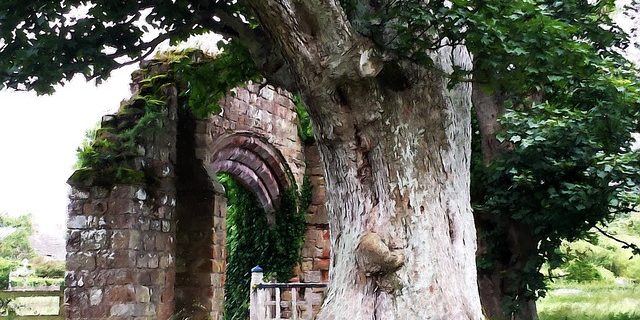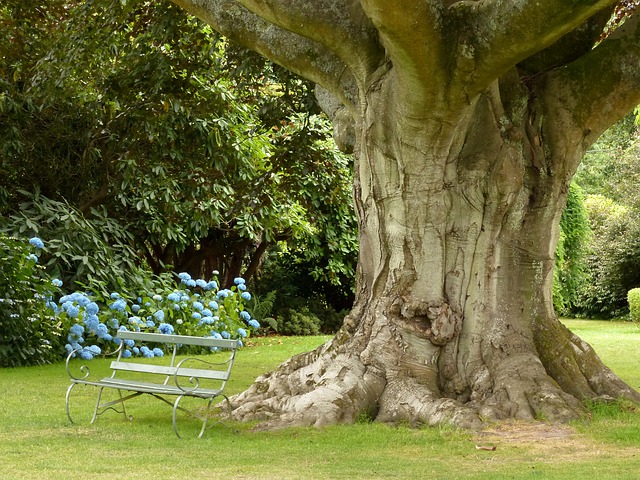
Get a quick no obligation quote It’s free and will only take a jiffy!
A Guide to Ancient Trees
Steeped in history, ancient trees are strikingly impressive. Irreplaceable, they have been gracing our landscapes for hundreds of years, providing vital habitats for wildlife and contributing to environmental sustainability. Here we look at how to identify ancient trees, why they are so important, and how to protect them.
What is an ancient tree?
Ancient trees make for a magnificent sight. They are very old compared to other trees of the same species, and are in the third and final stage of their life.
Ancient trees are defined by their age. There is no set age for a tree to be thought of as ancient, because different species age at different rates. A yew tree might not be considered ancient until it is 800 years old, whereas a birch tree, being fast growing, could be classed as ancient at just 150 years of age.
The oldest tree in the UK is reckoned to be the Fortingall Yew in Perthshire, Scotland. Estimated to be between 2,000 and 3,000 years old, although some say it could even be as many as 5,000 years of age, the churchyard tree is recorded in the Guinness Book of Records as ‘the oldest living vegetation in Europe’. There are also many other ancient trees in the UK.
Some of the most common species of trees that grow to be ancient include yew, oak, sweet chestnut, beech, birch, hawthorn, plane and apple.
How to identify an ancient tree?
There are various features that are typical to ancient trees and which can be used to identify them. These include:
Small canopy
Over the years, a tree’s canopy reduces in size via a process called retrenchment, otherwise known as growing downwards. This natural process sees the crown of the tree and the root system rebalance each other.
Wide trunk
The trunk of an ancient tree will usually be wider than those of younger trees of the same species. Size will be subject to soil type, climate, growing conditions and the species of tree. Ancient hawthorns may be considered wide at 1.5 metres, whereas a sweet chestnut could be five metres wide.
The smaller crown and wider trunk makes it more likely for the tree to withstand high winds and storms.
Hollowing, crevices and aerial roots
Many ancient trees tend to have a hollowed out trunk, although it’s not a hard and fast rule. They may also display coarse bark, crevices and aerial roots growing into the decaying trunks and cavities.
Why are ancient trees so important?
Just because a tree is old, in the final stage of its life and may be decaying, doesn’t mean it’s the end of the line. Neither does it mean the tree has no benefit. Ancient trees can live for many more years, and are very important living things. In fact, the older the tree, the more vital to wildlife it becomes.
All the nooks and crannies that have appeared over time form valuable habitats for rare and specialist wildlife, all of which are vital to biodiversity.
Typically, ancient trees support all sorts of wildlife, including:
Fungi
Fungi can live on any part of a tree, from the roots to the leaves. They are vital when it comes to decomposing plant material, releasing minerals and nutrients to support surrounding plants and trees.
Trees hollow out when fungi break down the wood that the tree no longer needs, releasing valuable minerals for the tree to re-use. The fruiting bodies of fungi also provide a rich food source for the likes of red squirrels, badgers, wood mice, and some beetles and slugs.
Invertebrates
There are at least 2,000 species of invertebrates across the UK, all of which are reliant on dead and decaying wood. As the dead wood habitats in ancient trees transform over time, so does the variety of invertebrates that live in those trees.
Saproxylic invertebrates for example rely on dead or decaying wood for a proportion of their life cycle. Many of these invertebrate species are declining because of the shortage of deadwood habitat in the UK, which shows just how important ancient trees are.
Lichens
Lichens grow very slowly, some at just 1-2mm per year, and ancient trees are just the place for them to thrive. Lichens are vital because they offer a source of food and shelter to an array of organisms, making them of rich ecological value.
The loss of ancient trees can have very serious negative consequences for lichen communities.
Loss of ancient trees can have serious negative consequences for these lichen communities.
Where to find ancient trees?
Great Britain is home to a very large number of ancient trees, especially compared to other countries in Europe. Ancient trees can be found in all sorts of habitats, including churchyards, nature reserves, orchards, fields, ancient woodland, hedgerows, deer parks, chases, commons and some urban areas.
With the UK is so rich in natural history, there are a lot of places where there are particularly high numbers of ancient trees. Visiting such trees is like stepping back in time, and it is intriguing to imagine what stories they would tell and historical events they would recount, if only they could speak. Many ancient trees acted as natural meeting places to plot and preach, like an open air village hall for communities.
How to protect ancient trees in the UK?
The Woodland Trust says that ancient trees need special care and attention. They are keen for members of the public to help them map the UK’s ancient trees, so that they can protect them. If you come across an important tree, you can add it to their map, including information such as girth, species and location. Once added, a Woodland Trust expert will visit and verify the tree, and add it to the Ancient Tree Inventory.
The Ancient Tree Forum raises awareness of the value of old trees, lobbies for their protection, records their locations, provides advice on their management, trains those who look after them, and provides opportunities for people to enjoy them.
Looking for help in caring for an ancient tree?
Ancient trees call for a very specialist type of care from tree surgeons with extensive experience.
At TH Trees Ltd we have been caring for trees across Essex for more than 15 years. For a free consultation and the helpful advice you need to look after an ancient tree, please call us on 01268 642814.
Had a fallen tree in the early hours of Monday morning, called for quote and the team had it cleared on the same day. Really good communication when the lads were onsite and did a great job. Lots of pride in their work shown with the thorough clear up. Would thoroughly recommend.
Thank you Stuart for your kind review. We were glad to be able to help you with your fallen tree. If there's anything else you need in the future, please don't hesitate to get in touch.











